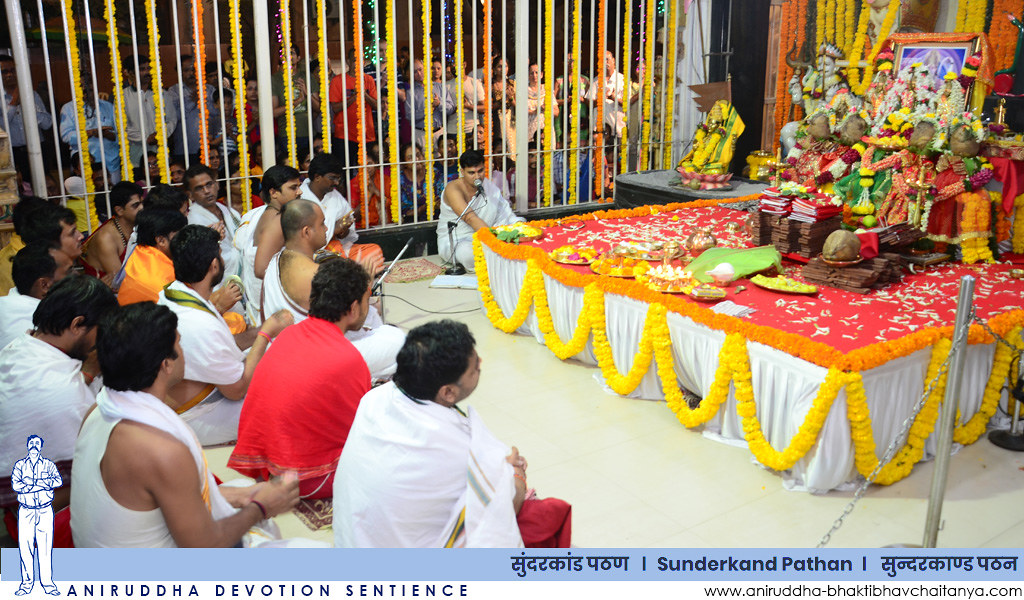Overview
Introduction to Sunderkand
Sunderkand is a sacred text in Hinduism that is dedicated to Lord Hanuman, the monkey god. It is a chapter from the epic Ramayana and is considered to be a significant part of spiritual practice. The word ‘Sunderkand’ means ‘beautiful chapter’, and it describes the journey of Hanuman to Lanka in search of Sita, the wife of Lord Rama. This chapter is known for its powerful verses and the devotion of Hanuman towards Lord Rama. Lord Hanuman is revered for his strength, courage, and unwavering devotion, making Sunderkand an essential text for those embarking on a spiritual journey. By reciting and understanding Sunderkand, devotees seek inspiration and guidance from Lord Hanuman to overcome obstacles and achieve spiritual growth.
Importance of Spiritual Journeys
Embarking on a spiritual journey is a transformative experience that can have a profound impact on one’s life. The importance of spiritual journeys lies in their ability to provide individuals with a deeper understanding of themselves and the world around them. These journeys allow individuals to connect with their inner selves and explore the depths of their spirituality. One of the most enchanting aspects of spiritual journeys is the opportunity to encounter new perspectives and gain wisdom from different cultures and traditions. Through these journeys, individuals can find solace, inspiration, and guidance, leading to personal growth and a sense of purpose. By embarking on a spiritual journey, one can embark on a path of self-discovery and enlightenment, ultimately leading to a more fulfilling and meaningful life.
Purpose of Embarking on a Spiritual Journey
Embarking on a spiritual journey is a deeply personal and transformative experience. It is a quest for self-discovery, inner peace, and connection with the divine. The purpose of embarking on a spiritual journey is to explore the depths of our being, to seek answers to life’s fundamental questions, and to find meaning and purpose in our existence. It is a process of self-reflection, healing, and growth, where we let go of the past, release limiting beliefs, and embrace a higher consciousness. Through this journey, we gain wisdom, clarity, and a deeper understanding of ourselves and the world around us. It is a path that leads to self-realization and spiritual enlightenment, allowing us to live a more fulfilling and meaningful life.
Understanding Sunderkand

Meaning and Significance of Sunderkand
Sunderkand is a significant chapter in the Hindu epic Ramayana, composed by sage Valmiki. It narrates the journey of Lord Hanuman to find and deliver a message to Lord Rama’s wife, Sita, who has been abducted by the demon king Ravana. The word ‘Sunderkand’ means ‘beautiful chapter’ and it holds great importance in Hindu mythology. It is believed that reciting Sunderkand brings peace, prosperity, and spiritual growth. The chapter highlights the devotion, courage, and strength of Hanuman, who is revered as the epitome of devotion and loyalty. Sunderkand is not only a story of divine intervention but also a guide for individuals embarking on a spiritual journey, teaching them the values of faith, determination, and selflessness.
Historical Background
The historical background of Sunderkand is rooted in the ancient epic of Ramayana. Sunderkand is a chapter in Ramayana that focuses on the journey of Hanuman to find Sita, the wife of Lord Rama, who has been abducted by the demon king Ravana. This chapter is considered to be one of the most significant and powerful sections of Ramayana, as it showcases the devotion, strength, and determination of Hanuman. It provides valuable insights into the understanding of spirituality and the importance of faith and courage in overcoming obstacles. Through Sunderkand, readers can gain a deeper understanding of the complexities of human emotions and the ultimate triumph of good over evil.
Key Characters and Events
In the epic tale of Sunderkand, there are several key characters and events that play a significant role. One of the most important characters is Lord Hanuman, the mighty monkey god who embarks on a spiritual journey to find Sita, the wife of Lord Rama. Hanuman’s unwavering devotion and extraordinary powers make him a central figure in the story. Another key character is Ravana, the powerful demon king who kidnaps Sita and holds her captive in his kingdom of Lanka. The events that unfold in Sunderkand revolve around Hanuman’s courageous efforts to locate Sita and deliver Lord Rama’s message to her. These events include Hanuman’s encounter with various obstacles and demons, his crossing of the ocean, and his eventual meeting with Sita. Through these key characters and events, Sunderkand explores themes of devotion, bravery, and the triumph of good over evil.
Preparing for the Journey
Mental and Emotional Preparation
Embarking on a spiritual journey through Sunderkand requires mental and emotional preparation. It is a profound experience that demands introspection and a willingness to delve deep within oneself. The journey involves encountering various challenges and obstacles, both internal and external. Therefore, it is essential to cultivate a sense of resilience and strength before embarking on this transformative adventure. Additionally, it is important to be open-minded and receptive to the teachings and lessons that may arise along the way. By mentally and emotionally preparing oneself, individuals can fully immerse themselves in the spiritual journey and derive the maximum benefit from it.
Physical Preparation
Physical preparation is an essential aspect of embarking on a spiritual journey through Sunderkand. In order to fully immerse oneself in the teachings of the Ramayan, it is important to prepare the body for the challenges that lie ahead. This includes maintaining a healthy lifestyle through regular exercise, proper nutrition, and sufficient rest. Additionally, it is beneficial to engage in activities that promote mental and emotional well-being, such as meditation and mindfulness practices. By taking care of the physical self, individuals can create a strong foundation for their spiritual exploration. The Ramayan serves as a guide on this journey, providing valuable lessons and insights that can transform one’s perspective on life. Through physical preparation, seekers can enhance their receptivity to these teachings and deepen their connection to the divine.
Creating a Sacred Space
Creating a sacred space is an essential step in embarking on a spiritual journey. It is a physical and mental space that allows individuals to connect with their inner selves and the divine. This space can be a room, a corner in a house, or even a natural outdoor setting. The key is to make it a place of tranquility and serenity, free from distractions and negative energies. By creating a sacred space, individuals can cultivate a sense of peace and mindfulness, enabling them to delve deeper into their spirituality and embark on a transformative journey.
Embarking on the Spiritual Journey

Setting Intentions
Setting intentions is a crucial step in embarking on a spiritual journey through Sunderkand. It is the process of consciously deciding what we want to achieve and experience during this sacred pilgrimage. By setting clear intentions, we align our thoughts, emotions, and actions with our spiritual goals. This allows us to focus our energy and attention on the desired outcomes, making it easier for us to navigate through the challenges and obstacles that may arise along the way. Setting intentions also helps us stay motivated and committed to our spiritual path, as it reminds us of the purpose and significance of our journey. In the context of Sunderkand, setting intentions can involve seeking spiritual growth, deepening our connection with Lord Hanuman, and gaining insights and wisdom from the sacred text. By setting intentions, we open ourselves up to the transformative power of this spiritual practice, allowing us to experience profound shifts in our consciousness and connection with the divine.
Practicing Mindfulness
Practicing mindfulness is an essential aspect of embarking on a spiritual journey through Sunderkand. Sunderkand, also known as ‘सुन्दरकाण्ड‘ in Sanskrit, is a significant chapter of the Indian epic Ramayana. It depicts the heroic journey of Lord Hanuman in search of Devi Sita, the wife of Lord Rama, who was abducted by the demon king Ravana. By practicing mindfulness, one can fully immerse themselves in the divine story of Sunderkand and connect with the profound teachings it offers. Mindfulness allows individuals to be fully present in the moment, enabling them to absorb the spiritual essence of Sunderkand and experience its transformative power. Through mindfulness, one can delve deep into the verses of Sunderkand, contemplate its symbolism, and gain insights into the eternal truths it conveys. By incorporating mindfulness into their spiritual practice, individuals can embark on a profound journey of self-discovery, spiritual growth, and enlightenment.
Engaging in Rituals and Prayers
Engaging in rituals and prayers is an integral part of the spiritual journey through Sunderkand. The act of performing rituals and offering prayers allows individuals to connect with the divine and seek blessings. Sunderkand, a chapter from the epic Ramayana, holds immense significance in Hindu mythology. It narrates the heroic journey of Lord Hanuman in search of Goddess Sita. Devotees often recite Sunderkand with utmost devotion and faith, believing that it brings them closer to Lord Hanuman and helps them overcome obstacles in life. The rituals and prayers associated with Sunderkand create a sacred atmosphere, where devotees can immerse themselves in the divine energy and experience spiritual growth. By engaging in these practices, individuals can deepen their connection with the divine and embark on a transformative spiritual journey.
Challenges and Rewards

Overcoming Obstacles
Overcoming obstacles is an essential part of any spiritual journey. It is during these challenging moments that we learn and grow the most. In the Sunderkand, the protagonist faces numerous hurdles and trials, symbolizing the hurdles we encounter in our own lives. However, through perseverance and faith, he is able to overcome these obstacles and continue on his path. This serves as a powerful reminder that no matter what challenges we face, we have the strength within us to overcome them. Download the Sunderkand to embark on your own spiritual journey and discover the wisdom and guidance it offers.
Gaining Spiritual Insights
Gaining spiritual insights is a transformative experience that takes us on a profound journey of self-discovery and enlightenment. It is a process of delving deep into the depths of our soul, seeking a deeper understanding of our purpose and connection to the divine. As we embark on this spiritual journey through Sunderkand, we are guided by the powerful teachings and lessons found within its verses. The text serves as a roadmap, leading us towards spiritual growth and awakening. Through the recitation of the sacred hymns and the contemplation of their meanings, we are able to tap into a higher consciousness and gain profound insights into the nature of existence. The journey through Sunderkand not only provides us with a deeper understanding of the epic Ramayana but also offers valuable lessons on faith, devotion, courage, and the triumph of good over evil. It is through this journey that we are able to cultivate a sense of inner peace, harmony, and spiritual fulfillment.
Experiencing Inner Transformation
Embarking on a spiritual journey through Sunderkand is a profound experience that can lead to inner transformation. This ancient text, part of the Indian epic Ramayana, takes readers on a divine quest filled with symbolism and spiritual teachings. As one delves into the verses of Sunderkand, they are exposed to the trials and triumphs of Lord Hanuman, the embodiment of devotion and courage. Through his unwavering faith and selfless actions, Hanuman becomes an inspiration for seekers on their own spiritual path. The journey through Sunderkand not only offers a glimpse into the rich mythology of Hinduism but also provides valuable insights into the human condition and the power of divine intervention. As readers immerse themselves in the sacred verses, they are encouraged to reflect on their own lives and make the necessary changes to cultivate inner peace and spiritual growth. The transformative power of Sunderkand lies in its ability to awaken the dormant spirituality within individuals and guide them towards a higher state of consciousness.
Conclusion

Reflecting on the Journey
Embarking on a spiritual journey through Sunderkand is a transformative experience. The Sundara Kanda, also known as the ‘Beautiful Chapter’, is a significant part of the Indian epic Ramayana. It is a tale of devotion, courage, and self-discovery. Reflecting on this journey allows one to delve deep into the teachings and symbolism of the text. Sunderkand takes the reader on a profound exploration of faith, love, and the power of good over evil. By immersing oneself in the story of Lord Hanuman’s adventures, one can gain insights into the human condition and find inspiration to overcome challenges in life. The Sundara Kanda Wikipedia page provides a comprehensive overview of the chapter, making it a valuable resource for those seeking to understand the significance and impact of this spiritual journey.
Integration into Daily Life
Integration into daily life is a crucial aspect of embarking on a spiritual journey through Sunderkand. It is not enough to simply read and recite the verses; one must strive to apply the teachings and principles in their everyday existence. This integration involves incorporating the values of devotion, humility, and selflessness into one’s thoughts, words, and actions. By doing so, individuals can experience a profound transformation, finding peace, clarity, and purpose in their lives. Bold passages: applying the teachings and principles, incorporating the values of devotion, humility, and selflessness, experiencing a profound transformation, finding peace, clarity, and purpose.
Continuing the Spiritual Path
Continuing the Spiritual Path
Author Profile

Latest entries
- 28 June 2025BlogHow to Choose the Best High-Yield Savings Account with 5%+ Interest in India (2025 Guide)
- 28 December 2024Blog13 High CPC Blog Niche for 2025
- 28 December 2024BlogTop 6 Employee Management Software for Small Businesses
- 19 December 2024BlogShri Hanuman Chalisa in Hindi Text with English Translation

